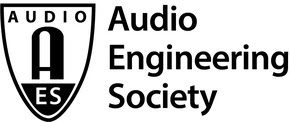The AES Show Fall 2020 Goes Virtual
Audio expo transforms into month-long array of online presentations and programs
Story Highlights
Like the vast majority of U.S. trade shows since March, this year’s AES Show will be virtual. The expo, which had been scheduled as a three-day event Oct. 21-24, will instead spread over most of the month, from Tuesday, Oct. 6 to Friday, Oct. 30. Those four weeks, which the organization has declared “Audio Engineering Month,” will be filled with an array of audio presentations and activities.
 Among them will be the Technical Program — which is scheduled for Oct. 27-30 — featuring live and on-demand content, student and career activities, a hardware- and software-product showcase, and special events.
Among them will be the Technical Program — which is scheduled for Oct. 27-30 — featuring live and on-demand content, student and career activities, a hardware- and software-product showcase, and special events.
Some of this content will be available on demand beginning Oct. 27, and all of it will be available on demand a day or so after its first presentation.
“Expanding the convention offerings across a full month answers one of the biggest questions raised by convention attendees in the past when faced with hundreds of compelling sessions packed into just four days: How do I choose?” says AES Show Fall 2020 Convention Co-Chair Jonathan Wyner. “Applying lessons learned from AES’s first online convention experience with the highly successful AES Virtual Vienna, we are extending the timeline to provide our ‘attendees’ the opportunity to dive deeper into the program and explore new topics.
“Plus,” he continues, “we have some exciting and innovative new programming. A virtual event allows us to take attendees places they have never been. It also means that you will be able to see and hear presenters up close and personal as never before. All attendees will have the best seat in the house.”
Adds Convention Co-Chair Valerie Tyler, “With all the online content, the convention can now be experienced by anyone in the world that has an internet connection. Combined with lowered registration fees and without the necessity of travel costs and logistics, the 2020 AES Show will be the most accessible ever.”
Rates are $149 for AES members and $274 for non-members, the latter including one year of AES membership. AES student members receive a further discount, taking registration cost down to $99 for the entire month of programming.
Extending Virtuality
At the same time, the AES is also expanding access to the content of the complete library of video and streaming-media presentations archived from previous years of AES conventions and conferences, oral-history projects, the AES Legends video series, and other events, with new videos produced and uploaded year-round. The new AES Live: Videos portal offers AES members more than 365 videos of exclusive content in more than 30 browsable categories, in a recently redesigned user-friendly format.
The library contains videos and other media covering 32 topical categories, including Recording and Production, Live Sound, Immersive and Spatial Audio, Game Audio and XR, Acoustics and Psychoacoustics, Archiving and Restoration, Audio for Cinema and Theater, and Audio Networking. Access is available for AES members; non-members can join for $125, currently enrolled students for $50.
New areas of coverage for the group this year include the AES Symposium on Applications in Machine Learning in Audio, which took place online Sept. 28 and 29. This first-ever AES event dedicated to machine learning brought together academic audio researchers and practitioners to offer insight to the capabilities of machine-learning applications and technologies. Sessions included “Current Trends in Audio Source Separation,” “Cognitive Audio: Enabling Machine Learning Systems With an Understanding of How We Hear,” and “The Challenges of Bringing Audio Products With AI to Market.”
Broadcast Is Part of the Show
Broadcast audio is always a strong component in AES technical programs and will be so this year online, offering these presentations:
- “A Century of Radio: What You May Not Know About the History of Broadcasting,” recounting how and when broadcasting began, will explain how the industry arrived at its current state.
- “Create ATC 3.0 Conform MPEG-H With Common DAWs” will show how to create, edit, monitor, and export MPEG-H content for broadcast applications quickly and easily in common production workflows with every DAW.
- “Keeping On-Air Through COVID” will discuss how to keep crew and talent safe and offers a look at the protocols being developed and put into practice.
- “Mic,” during the 100th anniversary of radio broadcasting, will look at development of microphone technology, which was driven by the then-new medium. Refinements of carbon and condenser microphones started off the 1920s, and the decade concluded with electromagnetic dynamics providing both the moving coil and ribbon-velocity microphones.
- “Practical Tips for Using Digital Audio in a 2110 Facility: In-Depth Expertise on IP Architecture and SMPTE ST 2110” features a variety of useful classes taught by a panel of industry experts who share their tips for success and respond to your toughest questions.
- “Stay Safe: Disinfecting Microphones in the Time of COVID-19” will examine how to keep the artists, engineers, and microphones healthy during recording and performance.
- “The Home Radio Studio” will look at a network radio studio built into the equivalent of a closet, with the control room in the laundry room, examining equipment configuration, acoustics, and how to handle program production during the pandemic.
In addition, AES’s newly formed Audio Product Education Institute (APEI) will host a three-day Product Development Symposium as part of the online events, to promote the methodologies, practices, and technologies involved in developing and bringing audio products to market. Those sessions are scheduled for Oct. 14-16.
